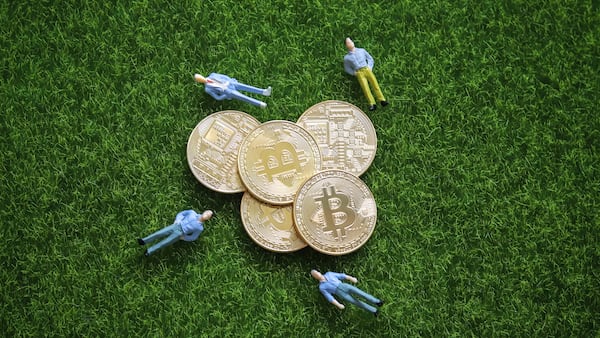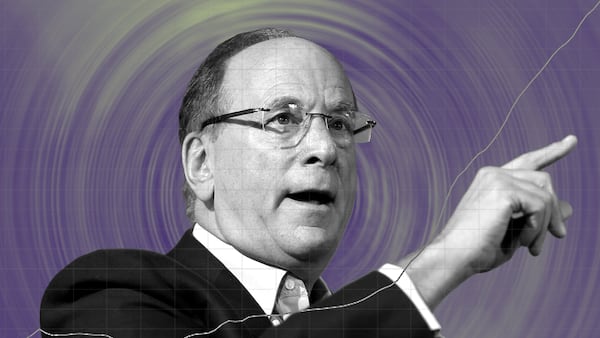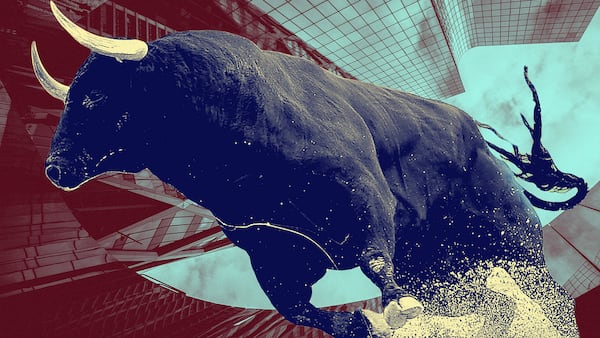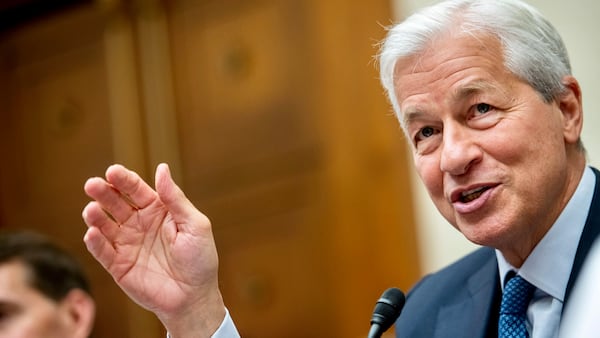- Bitcoin has recovered slightly after dropping 20% on the back of 10 US spot Bitcoin ETFs launching.
- Interest rates and shifting market dynamics will drive a rebound, said analyst Noelle Acheson.
Bitcoin rebounded overnight after falling some 20% from its $49,000 high earlier in the month. Two things will drive the cryptocurrency’s recovery, according to analysts.
Noelle Acheson, author of the “Crypto is Macro Now” newsletter and former head of research at Genesis, said on X that the drop experienced over the past two weeks will “likely to be short-term, as ETF-related buying will continue as GBTC exits wane, and as geopolitical tension pushes more savings into a ‘hedge’ asset.”
The slide in prices showed signs of subsiding overnight.
Having fallen below the $39,000 mark, Bitcoin is now back trading over $40,000 by 1 pm UK time, up 3% since Tuesday.
on the BTC drop… I don’t think it’s just GBTC redemptions…
— Noelle Acheson (@NoelleInMadrid) January 22, 2024
often, BTC is a better indicator of liquidity sentiment than stocks, in that it is one of THE most sensitive assets to monetary conditions… over the past few days, we’ve seen a steep revaluation of rate cut… pic.twitter.com/qxmWDoL50r
In the meantime, “we’re seeing a glimpse of market sanity,” she said as mispriced rates outlooks are being corrected.
“It’s happened often before, and given the tailwinds — ETFs, halving, currency turmoil — the market is likely to recover, especially as dip-buyers step in,” Acheson said.
The recovery follows the US Securities and Exchange Commission’s approval of 11 spot ETFs earlier this month, bringing Bitcoin exposure to American investors and institutions.
In the end only 10 of the issuers approved launched spot Bitcoin ETFs, as Hashdex decided not to convert its existing futures ETF into a spot fund.
The halving refers to the process in which the network automatically, irreversibly halves the amount of Bitcoin miners can earn from appending blocks of verified transactions to the Bitcoin ledger.
Based on current estimates, the next halving will happen around mid-April.
Sell the news
So why did Bitcoin wobble?
The arrival of spot ETFs followed “the old Wall Street adage of ‘buy the rumour, sell the news,’” said Chris Kuiper, director of research at Fidelity Digital Assets.
Open interest, the total number of futures contracts held by market participants, rose towards the end of 2023 in anticipation of ETFs, Kuiper said, and “the speculative fever could also be seen in the spike in perpetual futures funding rates.”
How long this continues is anyone's guess, but even if we go down from here it still wouldn't mean the long-term bull market trend has been broken. Furthermore, nothing in the core bitcoin investment thesis has been invalidated.
— Chris Kuiper, CFA (@ChrisJKuiper) January 23, 2024
The recent spat of selling and downward trend in prices doesn’t suggest the “long-term bull market trend has been broken,” Kuiper concluded.
“Furthermore, nothing in the core Bitcoin investment thesis has been invalidated,” he added.
Fidelity Digital Asset’s research chief had warned that volatility could spike just a week before ETFs were approved and Bitcoin began to drop.
Grayscale’s GBTC has seen near $4 billion in outflows since the fund converted to an ETF, causing a drag on the price of Bitcoin, according to JPMorgan.
Investors had been locked into GBTC for years, including bankrupt firm’s such as FTX and BlockFi. The conversion to an ETF offered an off-ramp for firms in need of liquidity, and likely explains some of the selling pressure in recent weeks, according to JPMorgan.
Grayscale’s is also feeling the heat from other firms — including Wall Street giants BlackRock and Fidelity — that charge investors a fraction of GBTC’s 1.5% management fee.
BlackRock, the world’s largest asset manager, charges just 0.12%, 138 basis points lower than Grayscale.
How about interest rates?
While the GBTC selloff has been labelled a drag on the price of Bitcoin, another factor was the changing macroeconomic outlook.
In December, the US Federal Reserve made several dovish signals, which traders took to mean that interest rate cuts were on the horizon. Consequently, the price of Bitcoin went up.
Those hopes are now fading as traders change their outlook on rates. The market prices in a 75% chance of an interest rate cut in March just one month ago, this has since fallen to 50% on the back of hawkish statements from central bankers.
Lower interest rates benefit risk assets like Bitcoin as investors take more risk in search of returns.
Bitcoin’s 24/7 nature means it can often adjust to changes in outlook and sentiment ahead of other assets. It’s often “a better indicator of liquidity sentiment than stocks, in that it is one of THE most sensitive assets to monetary conditions,” said Noelle Acheson.
“Over the past few days, we’ve seen a steep revaluation of rate cut expectations. Bitcoin is reacting to that, while stocks aren’t,” she said.
Eric Johansson is DL News’ News Editor. Adam Morgan McCarthy is a Markets Correspondent at DL News. Tyler Pearson is a Junior Markets Correspondent at DL News. If you’ve got a hot crypto tip, please reach out to us at eric@dlnews.com, adam@dlnews.com and ty@dlnews.com.







